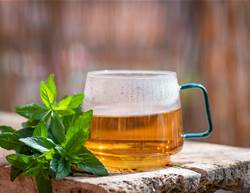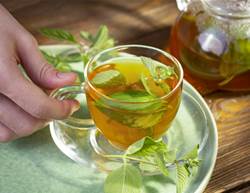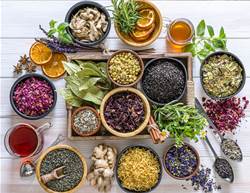Sage (Salvia officinalis) is a time-honoured remedy for irritation and inflammation of the mouth, throat and tonsils. Science supports the herb’s effectiveness, too. One study found that sage worked better than a placebo for relieving a sore throat, while another found that a sage-echinacea throat spray was as effective as a spray containing the antibacterial chlorhexidine and the topical anaesthetic lidocaine. A homemade tea has the added bonus of not containing the artificial colours, flavours or sweeteners that conventional sprays often have.
Echinacea (Echinacea purpurea) has always been valued as a natural way for treating sore throats, tonsillitis and coughs. Both the herb (the upper part of the plant) and the root are still used today (although the root has greater anaesthetic properties). Although scientists continue to debate its effectiveness for treating colds, its value as a topical anaesthetic is clear.
It’s easy to make your own throat-soothing tea. You can purchase sage as a culinary herb, and you can purchase echinacea root from many reputable websites. Then it’s as simple as simmering and straining. Gargle with the tea frequently, and for best results, swallow – don’t spit.
Sage & Echinacea Tea
Place 1 cup of water in asaucepan and add 1 teaspoon of dried echinacea root.
Bring the water to a boil, then reduce heat and simmer, covered, for 5 minutes.
Remove water from the heat and add 1 teaspoon of dried sage.
Allow to sit, covered, for 5 minutes, then strain and pour into a small jar. The tea will keep for 24 hours at room temperature. Make fresh daily.









